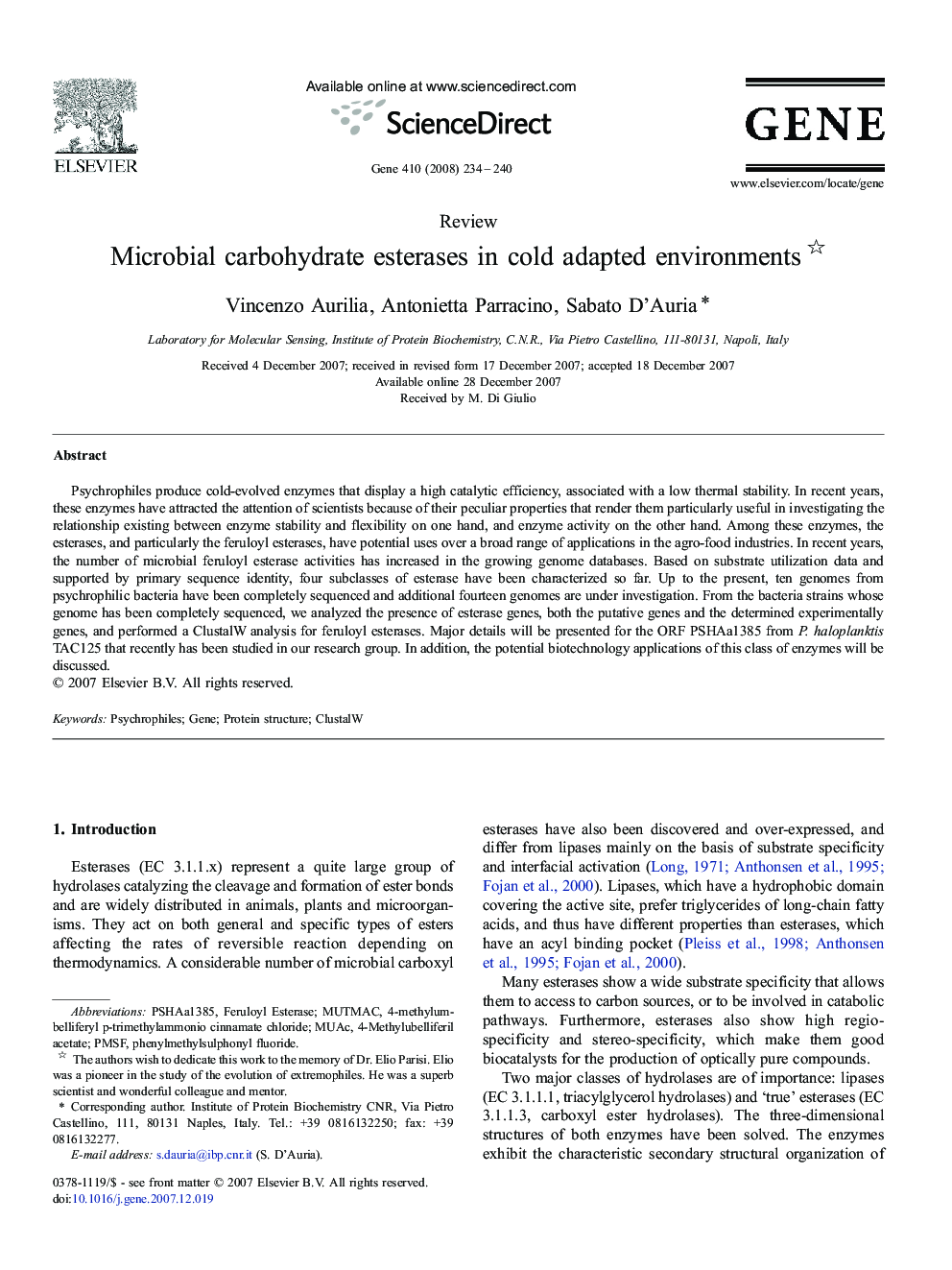| Article ID | Journal | Published Year | Pages | File Type |
|---|---|---|---|---|
| 2819339 | Gene | 2008 | 7 Pages |
Psychrophiles produce cold-evolved enzymes that display a high catalytic efficiency, associated with a low thermal stability. In recent years, these enzymes have attracted the attention of scientists because of their peculiar properties that render them particularly useful in investigating the relationship existing between enzyme stability and flexibility on one hand, and enzyme activity on the other hand. Among these enzymes, the esterases, and particularly the feruloyl esterases, have potential uses over a broad range of applications in the agro-food industries. In recent years, the number of microbial feruloyl esterase activities has increased in the growing genome databases. Based on substrate utilization data and supported by primary sequence identity, four subclasses of esterase have been characterized so far. Up to the present, ten genomes from psychrophilic bacteria have been completely sequenced and additional fourteen genomes are under investigation. From the bacteria strains whose genome has been completely sequenced, we analyzed the presence of esterase genes, both the putative genes and the determined experimentally genes, and performed a ClustalW analysis for feruloyl esterases. Major details will be presented for the ORF PSHAa1385 from P. haloplanktis TAC125 that recently has been studied in our research group. In addition, the potential biotechnology applications of this class of enzymes will be discussed.
